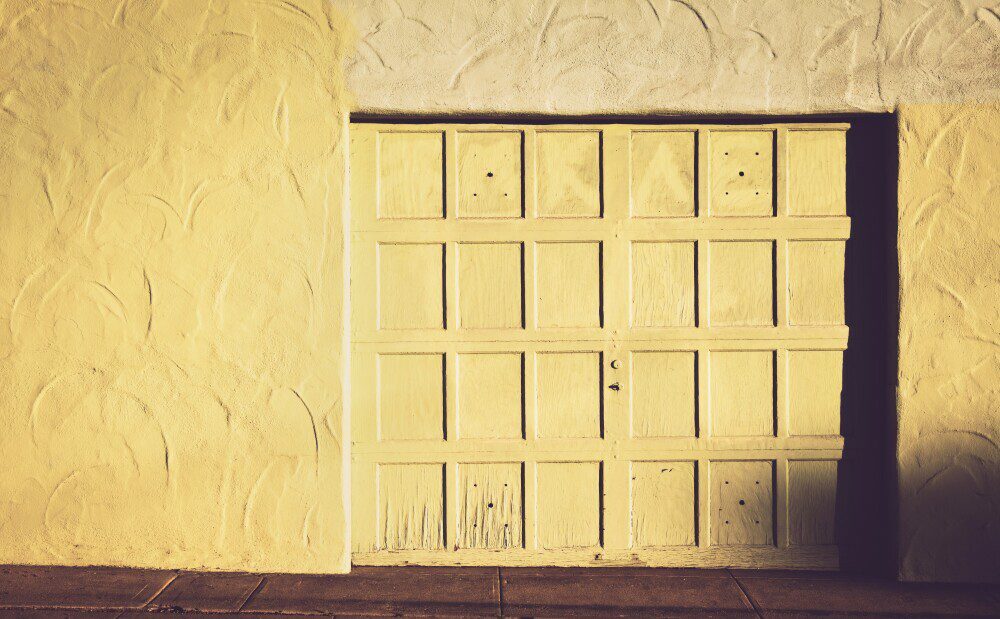How To Stop Cold Air Leaks In Winter – Ultimate Guide
When the chilly winds of winter start creeping in, cold air leaks can be a real thorn in the side. They may seem like a minor inconvenience, but these little gaps and cracks let in drafts that can cause some serious discomfort at home. The impact on your wallet can’t be ignored either. Therefore, this ultimate guide will tell you how to stop cold air leaks in winter in your home, how to identify cold air leaks at home, and how it helps save energy bills.
Why sealing cold air leaks in the home is important in winter?
Every drafty spot means your heating system has to work harder, racking up those energy bills. It’s like trying to fill a leaking bucket – inefficient and costly. Sealing these leaks not only makes your living space cosier, but also keeps those bills in check. Beyond just cost, there’s the comfort factor. A snug, draft-free home doesn’t just feel more pleasant; it helps maintain a consistent indoor temperature. No more putting on extra layers indoors or cranking up the heat to battle those cold spots.

Sealing leaks is also kind to the planet. By reducing energy consumption, you’re lowering your carbon footprint. So, fixing those pesky drafts is an all-around win – comfort, economy, and sustainability wrapped up in one.
Getting serious about stopping these cold air leaks can make a noticeable difference in how you experience winter at home. It’s about creating a space that stays warm and welcoming while also being mindful of costs and the environment.
How to Identify Cold Air Leaks at home?
Spotting where the cold air is sneaking in is the critical first step in tackling this issue. Different testing methods can help you pinpoint these pesky areas, making your sealing efforts more effective.
One handy trick is the candle test. It’s pretty straightforward. Light a candle and slowly move it around window frames, door edges, and other suspect areas. If the flame wavers or flickers, you’ve likely found a draft. This simple test can be surprisingly effective at home to trace those elusive leaks.

The dollar bill test is another quick check you can do. Close a door or window on a dollar bill and try to pull it out. If it slides out easily without resistance, the seal isn’t tight enough, signaling a spot that could let cold air in.
Besides these DIY methods, technology comes to the rescue with thermal cameras, which can accurately identify temperature variations. These gadgets might cost more, but some libraries and community centers lend them out, making them accessible for thorough checks if you need them.
Don’t overlook signs like chilly drafts around outlets or floors feeling colder near windows and doors. Trust these sensations; they often lead you to the right spots.
Identifying these leaks accurately means you’ll be able to apply your solutions more precisely, ensuring a warmer and more energy-efficient home.
Ten Effective Ways on How to Cold Air Leaks in Winter in Your Home and Office

Cold air drafts can make even the warmest winter days feel uncomfortable. Fortunately, there are several effective ways to stop or prevent these pesky leaks. How to stop cold air leaks in winter? We’ll explore ten practical solutions that can help you seal up your home and create a cosy, draft-free environment.
- Weather stripping is a great first line of defense against drafts around doors and windows. This involves applying materials like foam tape to seal gaps, making doors snug in their frames.
- Caulking is your go-to for filling in gaps and cracks. Use silicone or acrylic latex caulk to seal along baseboards and around window frames. It’s a reliable way to block air leaks that arise from tiny gaps.
- Plastic window kits can be incredibly effective for insulation, especially for older windows. Simply attach the plastic film across the window and use a hairdryer to shrink it tightly, creating an extra barrier against the cold.
- Draft stoppers, commonly known as door snakes, can be both functional and decorative. Just place them at the base of doors to block air flow. They’re easy to make with fabric and a bit of filling, or purchase ready-made ones.
- For larger gaps, expanding foam sealant fills voids that regular caulking can’t handle. It’s great for sealing larger cracks and can be shaped and trimmed once dry.
- The attic and garage often need special attention. Use weather stripping around attic doors and hatch openings. Consider draft-proofing garage doors with rubber seals to keep them airtight.
- Don’t forget the outlets and light switch plates. Adding insulation pads behind these can prevent air infiltration, especially on walls facing the outdoors.
- Door sweeps and threshold barriers provide an easy fix for gaps at the base of exterior doors. They’re simple to install and can drastically cut down on drafts.
- Installing storm windows and doors acts as another layer of insulation. They not only reduce leaks but add extra protection against harsh weather conditions.
- Always check to ensure existing seals around windows are intact. Over time, these can wear down, and re-sealing them with weatherproof tape or caulk can be a straightforward fix.
5 Effective Draft Stoppers for Your Home
- QUALITY MATERIAL: MARWOOD under door draft stopper outside is made of soft polyester fabric, inside filled with high quality PP cotton and natural washed sand. Compared with other similar products, our weighted door blocker has more sandbags filled inside. Seven sandbags filled evenly inside can ensure that door noise stopper is placed on the floor smoothly and play a better role.
- MULTI-FUNCTION: The wind stopper for door not only holds your door open or closed, but also blocks out the drafts to ensure your home warm in winter and keep cool in summer. It is suitable for most doors and windows, save money and energy. This door snake draft stopper can also prevent dust, light, noise, and even things like bugs, dust, rain, snow, or wind from invading your private sanctuary, so that you can enjoy a sweet dream and sleeping.
- 【Premium Design】- The CNMTCCO Smart Door Draft Excluder features a soft, soundproof design filled with high-density polyester wadding and glass beads. The 10 cm wide cloth strip enhances sealing efficiency, blocking drafts and noise for a more comfortable living environment.
- 【Multi-Functional】- This versatile draft excluder effectively keeps out wind, dust, noise, insects, light, and polluted air from entering your home. It offers comprehensive protection for your door, improving indoor air quality and enhancing your home’s comfort.
- Door seal, window seal are designed to fill doors and windows, cabinet gaps and optimize your doors and windows closure
- Draft excluder strip 10m*9mm*5mm, suitable for filling 2.4-4mm gaps; Can be cut to the length you need, self-adhesive strip install; Brush is soft and elastic, which can withstand extrusion deformation and wear resistance
- PROFESSIONAL DRAFT STOPPER: The door Insulation Strip can prevent the air conditioning or heating air in the house from being lost from under the door, thus improving the heating and cooling efficiency of the house
- HIGH-QUALITY MATERIAL: Self-adhesive under-door draft excluder, made of safe and non-toxic silicone material, better temperature resistance and sealing performance than rubber can effectively block the penetration of liquids or gases. 3M Super Door Adhesive and Peeler are suitable for most materials and easy to cut
- 👼【ONE SIDED DOOR DRAFT BLOCKER】—HIZH One Sided Adjustable Under Door Draft Blocker is made from top quality styrofoam and abrasion resistant Fabric. Fits door up to 37”. Total height is 3.5″. Jumbo 1.2-inch diameter foam tubes are perfect for blocking extra-large gaps under your door. The Under Door Draft Stopper will protect your home against the elements, taking the brunt of rain, snow, dust, and other weather-related factors.Keep your home safe with the HIZH One Sided Door Draft Stopper.
- 🔥【NOISE REDUCTION AND SAVE ENERGY/MONEY】—Our HIZHDoor Draft Stopper designed Door sweep to adopte effectively reduce noise, prevent dust from entering through the door, and keep the room quiet and clean. Bottom door draft blockers prevent the leakage of air conditioning or heating, make your room more efficient in cooling or heating. And help you reduce electric cost so as to save you energy and money. Use our efficient draft blocker and enjoy the peace and quiet of your home, now!
Keep the Heat In: 5 Window Film Choices
- tesamoll Thermo Cover window insulation foil: the transparent film forms a heat-insulating air cushion adding an extra moisture-proofing layer to the windows in your home
- A valuable contribution to energy efficiency: insulating with this transparent window insulation can save up to 8% energy used – save money and protect the environment at the same time
- Keep Your Home Warm & Cosy – Say goodbye to chilly drafts! This window insulation kit creates a weatherproof barrier, locking in warmth and comfort all winter long. A must-have for energy-efficient homes!
- Quick & Easy Installation – No tools, no stress! Our insulation window film comes with clear, step-by-step instructions, making it effortless to seal your windows and enjoy instant warmth.
- creates a secondary glazing effect on windows to prevent draughts and keeps the warm air in
- includes self-adhesive fixing tape
- POF MATERIAL: POF Shrinkable Insulation Film is made of non-toxic material, with high toughness, tear resistance, high transparency, uniform heat shrinkage, oil resistance, water resistance, aging resistance, easy to clean, etc., it is a replacement of traditional PVC heat shrinkable film
- SIZE AND PACKAGING: Shrinkable Insulation Film is large enough, width 1.6m, length 10m. one roll can be used for multiple windows. Packaging includes one roll of self-adhesive insulation film, three rolls of double sided tape and instructions to ensure quick and easy installation and removal
- EFFECTIVE WINDOW INSULATION KIT – window sealer kit for winter,keep out the wind and cold.Also,keep the house cool in summer.Suitable for all window types, Aluminum window frame, wrought iron grills, sliding window, casement window, louvre bathroom/toilet window and even grilled gates and balcony.
- ENVIRONMENTAL FRIENDLY – Window insulation kit made of the high-quality EVA plastic material, high tenacity, non-defrmation, tear-resistant, waterproof, chemical corrosion resistance, safe and durable. (Film can be replaced with mesh screen and it will be window screens.)
DIY vs. Professional Services in Sealing Air Leaks
Tackling air leaks yourself can be a satisfying and cost-effective option. With the right tools and a bit of elbow grease, many homeowners can seal minor leaks on their own. You just need some caulk, weather stripping, and perhaps a willing spirit.
DIY methods have the advantage of being budget-friendly and flexible. You can work on your own schedule, addressing leaks as they arise without the need to coordinate with contractors. Plus, there’s something rewarding about fixing things with your own hands.
However, not all air leaks are easy to handle. If you come across persistent drafts or hard-to-reach gaps, it might be time to think about getting professional help. Experienced contractors bring specialized equipment and expertise, ensuring that even the trickiest leaks are sealed properly.
Comparing costs, professionals can sometimes seem pricey, but they can save you money in the long run with their precision and guarantees. Their services often include comprehensive inspections and customized solutions that DIY efforts might miss.
For those wanting to dive into DIY, start small. Focus on easily accessible areas like windows and doors. Gradually, as you become more confident, you can tackle larger projects, like basement or attic insulation. Always ensure you have the right materials: good quality caulk, insulation foam, and proper gear.
Remember, whether you DIY or hire a pro, the goal is the same: a warm, efficient home. Sometimes, a combination of both methods is the best approach. Address simpler leaks yourself and leave the complex fixes to the professionals.
Comprehensive Guide to Sealing Air Leaks in Specific Areas
How to seal air leaks in the attic
When it comes to attic air leaks, focusing on areas around the hatch, vents, and wiring holes is essential. Seal these gaps with expansive foam or apply weatherstripping around the attic door to tighten things up. This prevents warm air from escaping into the unconditioned space, which can be a major source of heat loss.
How to seal air leaks at the garage?
Garages can often be overlooked, but they are important to address. Install a weather seal at the bottom of the garage door to close off any open gaps when the door is shut. Additionally, check for cracks in the walls and use caulk or foam sealant to close them up, ensuring that the cold stays out and the warmth remains in.

A real-life example can be inspiring. Take a homeowner who successfully reduced their heating bill by sealing off leaks in their attic and garage. Using mostly DIY methods with a bit of professional guidance, they managed to create a more efficient and comfortable living environment.
It’s crucial to avoid common pitfalls. One mistake is rushing through the process without double-checking the effectiveness of the seals. Make sure to perform follow-up checks around sealed areas to ensure they hold as intended, especially after weather changes.
Once everything’s sealed up, keep an eye on things. Regular maintenance checks help ensure the seals remain effective over time. Pay extra attention to high-traffic or frequently used areas, where wear and tear might break down seals.
Final Thoughts on Reducing Energy Bills This Winter

By sealing your home’s air leaks effectively, you’re not just tackling cold drafts but also paving the way to significant energy savings. This isn’t just about keeping warm; it’s an approach that reduces the strain on your heating system, thereby cutting those soaring utility bills.
The methods and strategies we’ve talked about—be it DIY tweaks or professional interventions—each play a role in transforming your home into an energy-efficient haven. It’s about smart living, where comfort meets cost-effectiveness through mindful actions.
Begin integrating these practices today and start noticing the difference not only in your monthly expenses but also in how cozy your home becomes. It’s a step that pays off, this winter and beyond.
Whatever approach fits your needs, whether you take on the task yourself or seek expert services, rest assured that addressing air leaks is a move towards a more sustainable and comfortable home.
Ready to save on your energy bills? Explore our blog for more tips.




























